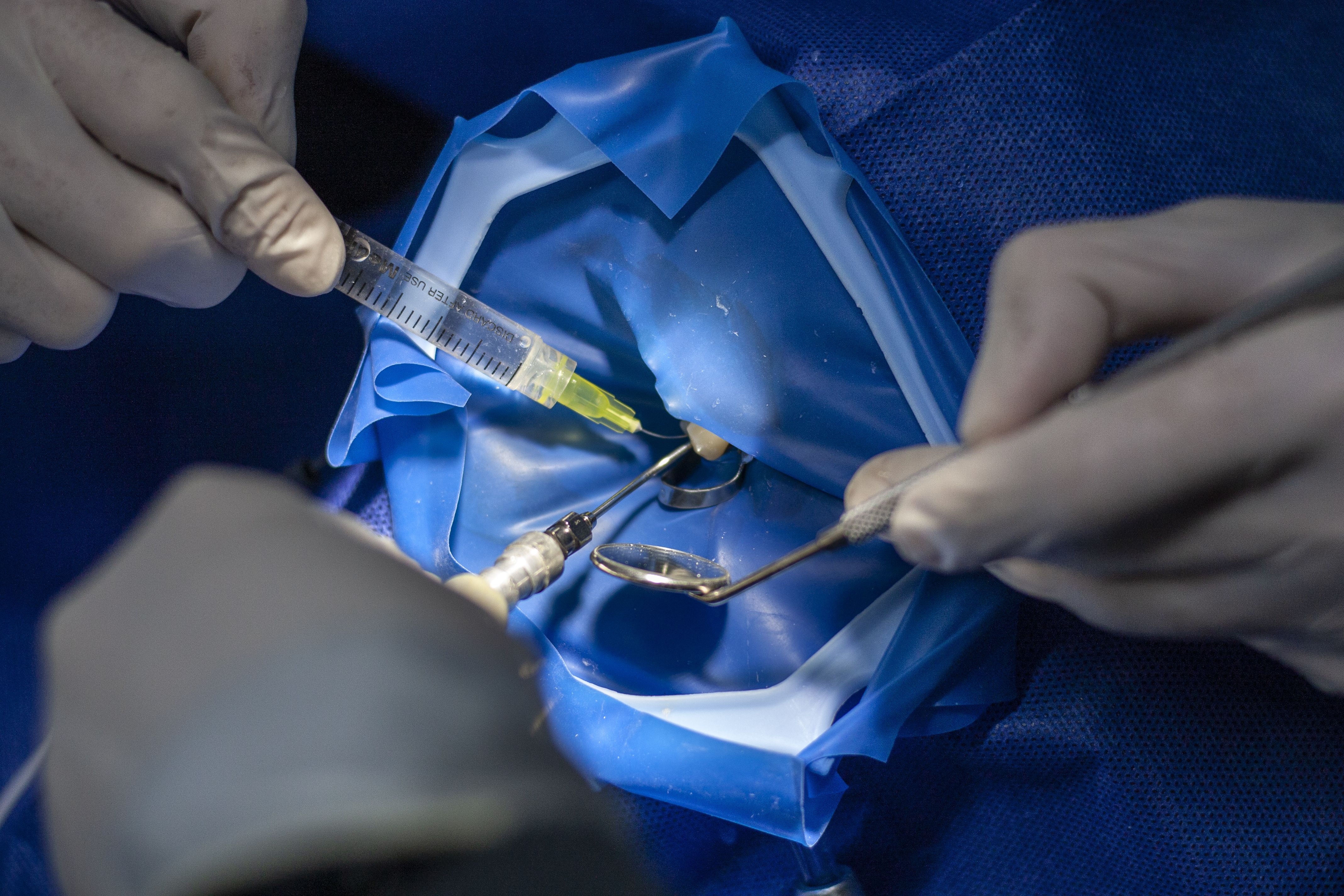Mitigating Aerosol Risks in Endodontic Procedures
How to mitigate airborne and aerosolized risks while performing endo procedures.
By Amilciar / stock.adobe.com

Mitigating aerosol risks has always been critical in the field of dentistry, but 2020 brought the issue of aerosol management to the spotlight. No stranger to aerosol-generating procedures, the dental practice seemed primed for the spread of SARS-CoV-2. In fact, the Centers for Disease Control (CDC) cited healthcare settings that performed aerosol-generating procedures (i.e., the dental practice) as areas that required extra engineering controls to prevent the transmission of contagious pathogens.1
But dental practitioners have been dealing with combatting aerosols and airborne contamination for years, and aerosol risk reduction was nothing new for most clinicians, including endodontists. Rebekah Lucier-Pryles, DMD, an endodontist in White River Junction, Vermont and cofounder of Pulp Nonfiction Endodontics, says that in some ways, endodontists were particularly prepared for the growing concern about airborne transmission.
“I think endodontists may have been poised for better aerosol management from the beginning,” Dr Pryles says. “Endodontics poses no unique challenges to aerosol management beyond that associated with general dentistry. But we’ve all been prepared.”
While clinicians were well-versed in aerosol reduction, the pandemic pushed its importance into high gear. While many tried-and-true tricks and tools for aerosol mitigation remained the same, there were several components that became absolutely critical for aerosol reduction.
High-volume evacuators (HVEs)
The best way to combat aerosols is to eliminate them before they spread into the air. By using intraoral evacuation with a high-volume evacuator (HVE), clinicians can isolate hazards by containing particles at the source. HVEs with high flow rates and sufficient suction create significant aerosol reduction compared to their low-volume counterparts and capture the majority of aerosols before they escape the oral cavity. In fact, one study found that HVEs can remove 90-98 percent of aerosols directly at the operatory site.2
“Reducing aerosols at the source is the best way,” stated an article from the American Association of Endodontists. “This is followed by mitigation aerosols dispersion and protecting the person from aerosol microbiota. Reducing microbial payload in aerosols at source can be achieved by using high volume evacuators, isolating the tooth or area, pre-procedural mouthwashes and reducing procedure time.”3
To attain this level of efficacy, clinicians should place the high-volume suction as close as possible to the tooth and handpiece head during drilling to prevent the creation of excess aerosols. To further reduce aerosols, clinicians should use a fast handpiece without (or with reduced) water, and avoid the use of ultrasonic scalers, which are culprits in high aerosol production.
But even with high-speed evacuation, there are still oral microorganisms in play. By combining HVEs with other tools, practitioners can further reduce the risk of aerosol spread and contamination.
Rubber-dam isolation
Utilizing rubber-dam isolation is nothing new when it comes to isolation and creating a sterile field. Utilizing rubber-dam isolation also contributes to aerosol reduction. The CDC recommends the use of a rubber dam to reduce aerosols generated during rotary dental procedures,4 and it is the standard of care in most endodontic dental settings.
“One of the myriad ways aerosols can be managed is with dental dam isolation,” Dr Pryles says. “Dental dam isolation is the standard of care in endodontics, meaning our exposure to oral aerosols may have been minimal.”
And there is plenty of research to back it up. One study found that rubber-dam isolation had been shown to eliminate microorganisms by up to 98 percent when preparing teeth for procedures.5 Several additional studies also concluded that rubber dams create a significant reduction in bacterial atmospheric contamination.6
“All things being equal, endodontics was minimizing aerosols well before the pandemic through the use of the rubber dam,” says Richard Mounce, DDS, an endodontist practicing in Pacific City, Oregon. “It’s nothing new.”
However, there have been some additional precautions added in the wake of the pandemic.
“In addition to dental dams, however, we've made several changes to our practice,” Dr Pryles says. “These include HVAC updates needed to reflect current CDC and OSHA guidance.”
Mitigating other risks
The field of endodontics faces many of the same aerosol challenges that all dental practitioners deal with on a daily basis. Combined with other preventative measures, such as the HVAC and ventilation updates undertaken in Dr Pryles’ practice, as well as enhanced personal protective equipment and antimicrobial rinses, aerosol reduction can greatly contribute to the safety of both clinicians and patients and mitigate risks.
“Ultimately, I don’t believe endodontics presents any unique challenges in aerosol management,” Dr Mounce says. “In addition to aerosol reduction, I’m a fan of pre-op rinses and all the standard precautions.”
The use of preprocedural mouth rinses (PPMRs) was recommended for dental practices from the CDC at the beginning of the SARS-CoV-2 outbreak. Although PPMRs were not relevant to reducing aerosols, studies showed they were a good option for reducing levels of oral microorganisms within the oral environment.1,7 While research on the efficacy of these antimicrobial rinses in combatting COVID-19 is still preliminary, the CDC believed that PPMRs with antimicrobial properties (such as chlorhexidine gluconate, povidone-iodine or cetylpyrinium chloride) could be effective in minimizing and reducing viral loads.
“Dental offices are inherently clean places, and I am not aware of any case where there is a documented transmission from the patient to the doctor or vice versa with COVID,” Dr Mounce says. “If a doctor is really concerned about the COVID-19 status of patients and spreading COVID-laden aerosols, they might consider having every patient rapid tested.”